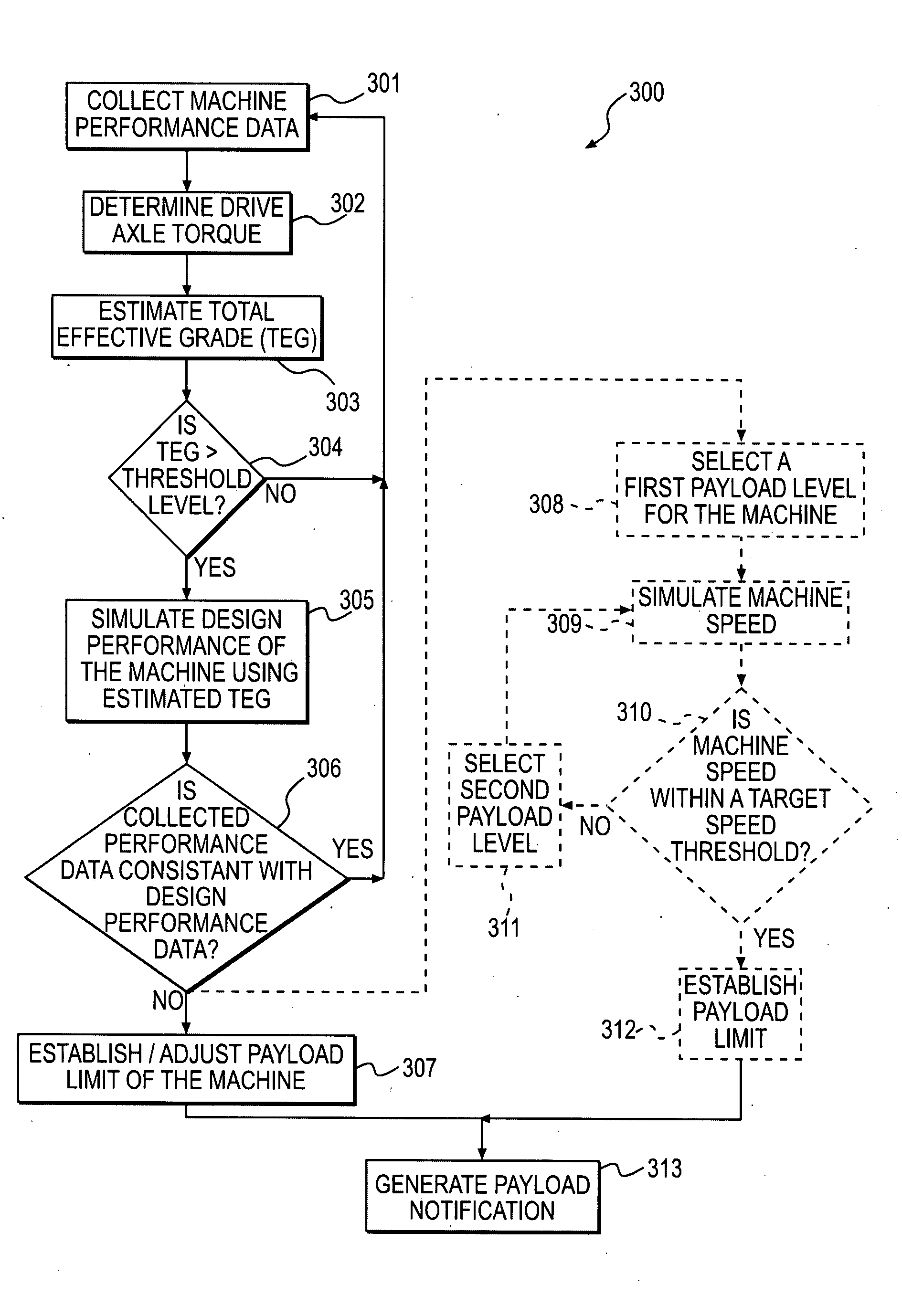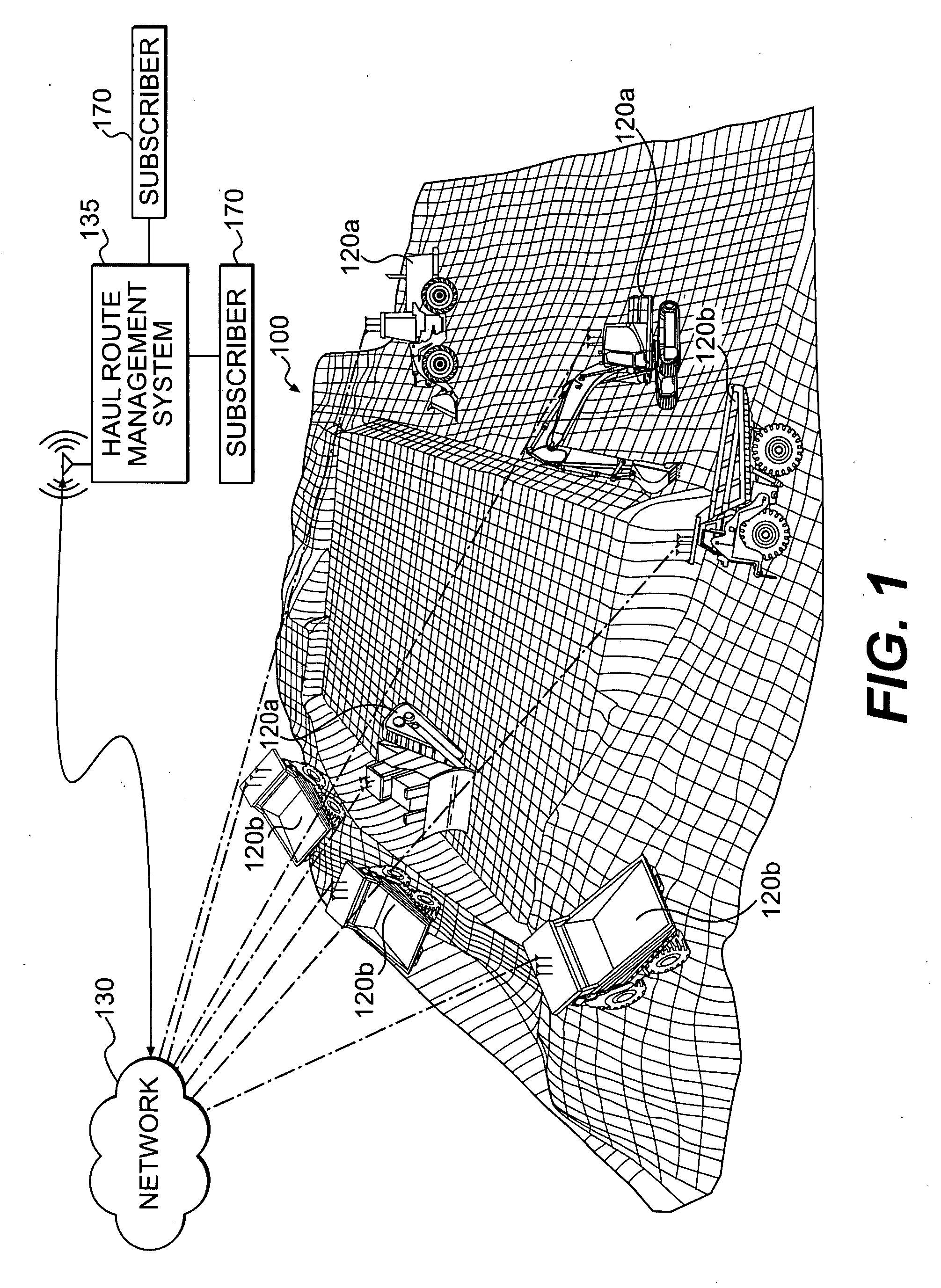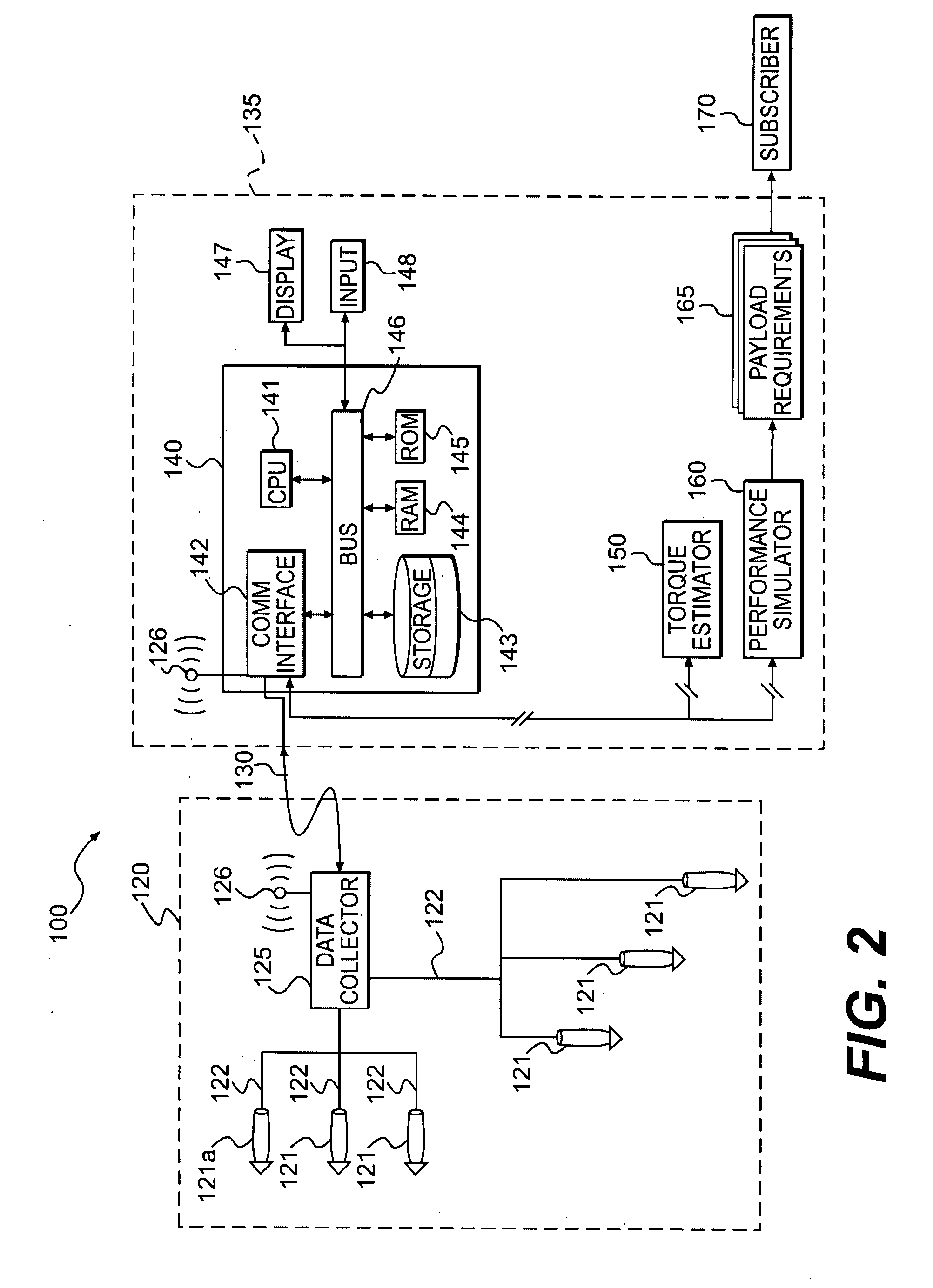Performance-based haulage management system
a technology of performance-based haulage management and management system, applied in the field of fleet management, can solve the problems of limiting the productivity of newer machines, slowing down of old machines, and being more susceptible to fatigu
- Summary
- Abstract
- Description
- Claims
- Application Information
AI Technical Summary
Benefits of technology
Problems solved by technology
Method used
Image
Examples
Embodiment Construction
[0015]FIG. 1 illustrates an exemplary work environment 100 consistent with the disclosed embodiments. Work environment 100 may include systems and devices that cooperate to perform a commercial or industrial task, such as mining, construction, energy exploration and / or generation, manufacturing, transportation, agriculture, or any task associated with other types of industries. According to the exemplary embodiment illustrated in FIG. 1, work environment 100 may include a mining environment that comprises one or more machines 120a, 120b coupled to a haul route management system 135 via a communication network 130. Work environment 100 may be configured to monitor, collect, and filter information associated with the status, health, and performance of one or more machines 120a, 120b, and distribute the information to one or more back-end systems or entities, such as haul route management system 135 and / or subscribers 170. It is contemplated that additional and / or different components ...
PUM
 Login to View More
Login to View More Abstract
Description
Claims
Application Information
 Login to View More
Login to View More - R&D
- Intellectual Property
- Life Sciences
- Materials
- Tech Scout
- Unparalleled Data Quality
- Higher Quality Content
- 60% Fewer Hallucinations
Browse by: Latest US Patents, China's latest patents, Technical Efficacy Thesaurus, Application Domain, Technology Topic, Popular Technical Reports.
© 2025 PatSnap. All rights reserved.Legal|Privacy policy|Modern Slavery Act Transparency Statement|Sitemap|About US| Contact US: help@patsnap.com



